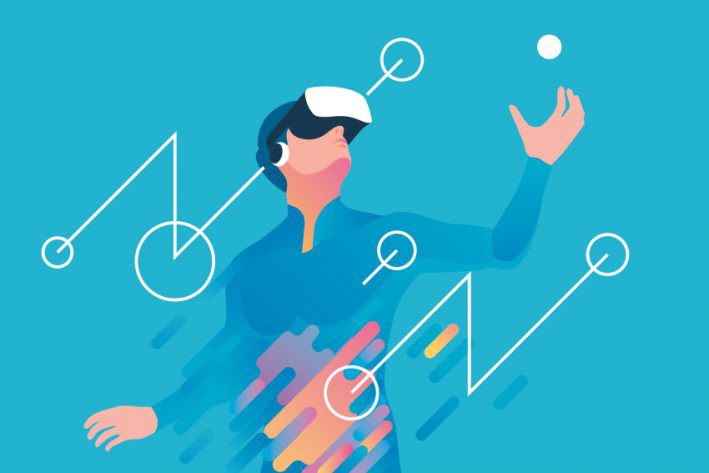
The world of virtual reality technology is one that has long fascinated tech geeks and scientists alike. Game developers have been seeking to create the ultimate immersive system from as early as 1995 with Nintendo?s Virtual Boy. As time went on, so too did the capabilities of VR technology evolve. Many have speculated that it?s only a matter of time before ?Full Dive? technology becomes a reality, as explored in such fictional worlds as that of Ready Player One and Sword Art Online. Of course, with such speculation comes the more pressing question ? to what extent is Full Dive Virtual Reality a viable possibility? And how far off are we really from this potential future of revolutionary technology?
What is Full Dive Virtual Reality?
The term ?Full Dive? was coined by the anime and light novel series Sword Art Online. The Full Dive concept was an entirely immersive virtual reality experience. Currently, the capabilities of virtual reality currently only involve 360-degree visuals, 3D sound design, and motion tracking. Full Dive VR would make use of the entire body and, more importantly, relay information to and from the brain.
Ernest Cline?s hit novel, Ready Player One, takes this idea quite literally. The novel?s Oasis VR system works with full-body hardware to provide haptic feedback across the physical body. Meanwhile, Sword Art Online takes a different approach, focusing instead on the relationship between the system and the brain. This system induces a semi-conscious state in which the body is paralysed and only the mind is stimulated. In this case, all movement and interactions are simulated between the system and the user?s brain.
Current VR Technology
While still in its early phases of development, virtual reality is already seeing some significant real-world applications. The most common and obvious of these applications is the use of VR in gaming. Virtual reality allows a player to have much more immersive gaming experiences. VR headsets give the player the ability to see the virtual world formed around them in 3D space. Physical motions made while wearing the hardware can also directly influence gameplay. Within the same realms of entertainment, virtual reality video experiences are also on the rise. These cover a wide range of areas, from educational documentaries to movies, horror experiences to rollercoaster simulators and, of course, adult videos. All of which once again take place within 360-degree virtual spaces.
Less mainstream applications include the use of VR in professional training. Virtual reality has been known to be used in military training, putting trainees into various simulations in the field. These simulations can be anything from flight simulations to medic training. What is more, the use of a virtual space instead of physical simulations greatly reduces the overall cost of training. Similarly, VR can aid medical students by providing them opportunities to practice surgeries and procedures in a risk-free environment.
Applications of VR Outside Gaming
The medical uses for virtual reality also go beyond training students. A number of medical institutions around the world are implementing use of VR as a non-chemical anaesthetic for patients facing treatments involving insurmountable pain. VR headsets can stimulate the brain during treatment, distracting patients from the pain by keeping the mind occupied elsewhere. Professionals have also looked to virtual reality for aid in treating mental health disorders like PTSD. Sufferers of the condition are provided a safe space in which to replay and better come to terms with traumatic events, while giving doctors an opportunity to understand the patients? conditions.
Those who suffer from acute autism can also use virtual reality as a means to practice social skills in a safe, virtual space, at the same time as boosting their brain activity and imaging. Those who suffer from physical disabilities can also use VR to experience various environments beyond the confines of their conditions. This can go even further by helping paraplegics to rebuild brain functions and gradually regain control of their limbs.
Finally, many organisations are making use of the 3D spaces provided by VR to help them better achieve their aims. School teachers are able to take students on virtual field trips to real-world locations. They can visit museums, historical events, or even the solar system from the comfort of the school campus. Architects use VR to build to-scale blueprints of construction projects to better understand the physical implications of their project. Many businesses are also beginning to hold virtual conferences in these spaces with co-workers from around the world.
How Close Are We to Full Dive Technology?
At present, VR systems are already becoming increasingly immersive. Various pieces of hardware grant users the ability to transmit physical movement into virtual data. On the most basic level, handheld motion sensors such as those used with the HTC Vive and PSVR headsets allow players to interact with items and entities in virtual space. A step up from that are 360-degree treadmills such as the Virtuix Omni and the Kat Walk Mini. These treadmills allow users to move in these 3D spaces by walking around in the real world.
On the inverse, we also have haptic technology that converts virtual data into physical sensation. Various companies such as HaptX Inc. have developed haptic gloves which use a number of tiny actuators to relay the sensations of touch, pressure, and temperature to the user based on interactions in virtual space. In other words, users can physically touch and feel things within virtual reality. Building on this concept, the Teslasuit provides full-body haptic feedback, emulating the same physical sensations across the user?s entire body. While haptic technology is still rather limited, breakthroughs made in the last few years alone point toward a much more immersive future for VR.

Brain?Computer Interfaces
However, for a system to truly boast a Full Dive experience as demonstrated in the likes of Sword Art Online, the technology would have to go far beyond physical haptic feedback. The idea of Full Dive is not so much full-body immersion as it is full-mind immersion. Such a system would therefore incorporate a brain?computer interface (BCI), allowing users to control system functions through the simple use of thought alone. The technology for this already exists in a certain capacity, although with completely different applications. BCIs are often used by people who are paralysed as a means to communicate. Sensors monitor brain waves and facial nerve signals to send information to the computer. Experiments with this technology have gone as far as allowing a paraplegic man to walk across a room using only these brain signals.
When it comes to gaming, Full Dive technology is not such a pipe dream as one might think. Back in 2017, developers Neurable debuted their VR game Awakening. The selling point of this experience was that the user could actually control aspects of the game using thoughts alone. Users could throw things at enemies by simply focusing on those objects. Awakening uses a modified HTC Vive, featuring an array of sensors that detect brainwaves on the surface of the scalp. Neurable is currently working with VR partners to bring this technology to market. They?re also working on a Unity development kit to allow developers to utilise this technology for themselves.
The Future of Full Dive
Set in 2022, the technology explored in Sword Art Online may not be too far off. While it seems vastly unlikely that in the next two years we will see such an advanced system as SAO?s NerveGear, the concept of Full Dive technology is no longer confined to the realms of fiction. At present, we are much closer to the reality of Ready Player One. Technology such as the Teslasuit and Virtuix Omni provide a convincing and immersive physical gaming experience. As developers continue to explore the endless possibilities of virtual reality and the technology becomes more advanced and accessible, it seems almost certain that we will eventually see truly immersive VR technology on the mainstream consumer market. With the current benefits and applications provided by virtual reality, the future uses of more advanced systems seem more than ever restricted only by the limits of our imaginations.
This is the first in what will be a series of articles exploring the vast world of virtual reality ? based both in current possibility and in the endless realms of speculation. In upcoming articles, I will more closely explore the representation of VR in fiction, provide insights into ongoing breakthroughs, and cover some of the more controversial aspects surrounding the technology.


